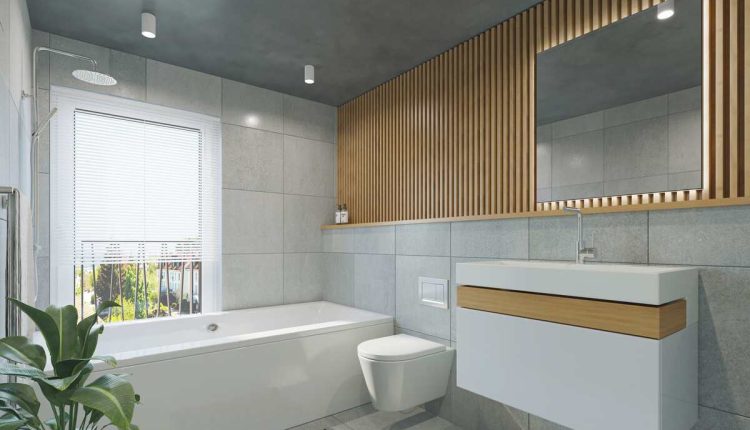In Austin, where the vibrant culture and dynamic lifestyle are in constant motion, the role of kitchens and bathrooms in homes is evolving to meet the unique needs of this bustling Texan city. Beyond their basic functions, these rooms have become the epicenter of style and innovation. This transformation isn’t just about aesthetics; it’s about how functionality shapes design trends. This article will delve into how functionality plays a pivotal role in driving design trends in kitchens and bathrooms and also touch on the ever-popular topic of bathroom remodel Austin.
Functionality as the Design Compass
The functionality of a kitchen or bathroom is paramount. These spaces need to cater to your daily needs efficiently. With the fast-paced nature of modern life, homeowners are increasingly looking for designs that make their lives easier.
For kitchens, this means incorporating features like smart appliances, efficient storage solutions, and ergonomic layouts. The rise of open-concept kitchens also demonstrates how functionality is intertwined with design. Combining the kitchen with the living space creates a communal atmosphere that suits contemporary lifestyles.
In bathrooms, functionality often translates into space-saving designs, luxurious amenities, and easy-to-maintain materials. Walk-in showers, double vanities, and high-tech toilets are some of the functional elements that have become trendy in recent years.
The Influence of Technology
Technology has made its way into every aspect of people’s lives, and their kitchens and bathrooms are no exceptions. The integration of smart devices has not only improved functionality but has also given birth to modern design aesthetics.
In kitchens, smart appliances are a prime example. Refrigerators that can suggest recipes based on the ingredients you have, ovens you can control from your smartphone, and voice-activated faucets have all become part of futuristic kitchen designs. These tech-savvy features not only make tasks more efficient but also add a touch of sophistication to the overall design.
Bathrooms have also witnessed a technological revolution. High-tech showers with customizable water pressure and temperature settings, smart mirrors that display the weather or your schedule, and even toilets with built-in bidets have made bathroom experiences more convenient and enjoyable.
Sustainability and Eco-Friendly Design
Functionality isn’t just about convenience; it’s also about sustainability. As environmental concerns grow, homeowners are increasingly looking for eco-friendly solutions in their kitchens and bathrooms.
In kitchens, this has led to the adoption of energy-efficient appliances, sustainable materials for countertops and cabinetry, and composting or recycling stations. These design choices not only reduce the carbon footprint but also align with the modern aesthetic of minimalism.
Bathrooms have followed suit with eco-friendly fixtures like low-flow toilets and faucets, as well as the use of recycled or reclaimed materials for tiling and vanities. The integration of natural light and greenery into bathroom designs not only reduces energy consumption but also promotes a sense of well-being.
The Bathroom Remodel Revolution
While kitchens have long been the focus of home improvement projects, bathroom remodels have gained substantial popularity in recent years. This surge can be attributed to the understanding that a well-designed bathroom can significantly enhance the overall value and comfort of a home.
A bathroom remodel in Austin often prioritizes functionality by optimizing the use of space. Smaller bathrooms are now being transformed into functional and stylish sanctuaries. Floating vanities and wall-mounted toilets create the illusion of space, while large mirrors and strategic lighting design make bathrooms appear brighter and more open.
The choice of materials in bathroom remodels is also a reflection of functionality. Porcelain and ceramic tiles, for instance, are not only aesthetically pleasing but also durable and easy to clean. Moreover, the incorporation of spa-like features, such as steam showers, soaking tubs, and heated floors, enhances the functional aspect of bathrooms by providing relaxation and comfort.
The Pursuit of Minimalism
Minimalism is a design trend that continues to gain momentum in both kitchens and bathrooms. The appeal of clutter-free spaces with clean lines and a focus on essential elements has captivated homeowners and designers alike.
In kitchens, this translates to sleek, handleless cabinetry, open shelving for a minimalist display of kitchenware, and a neutral color palette. The use of hidden storage solutions ensures that functionality isn’t compromised for the sake of aesthetics.
Bathrooms echo this trend with uncluttered surfaces, frameless glass shower enclosures, and wall-mounted vanities. The absence of excessive ornamentation allows for easy cleaning and maintenance, emphasizing functionality and simplicity.
Conclusion
The changing role of kitchens and bathrooms in people’s homes reflects their evolving lifestyles and priorities. Functionality has become the driving force behind design trends in these essential spaces. From technology integration to sustainability and minimalism, kitchens and bathrooms are now not only functional but also aesthetically pleasing and in harmony with the modern way of life.
Read Also: The Benefits Of Commercial Remodels










